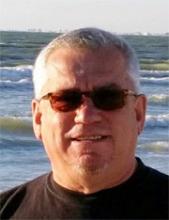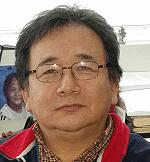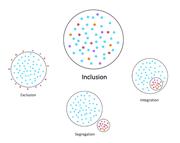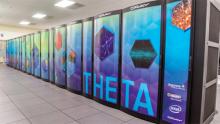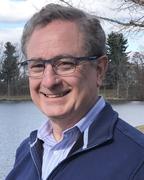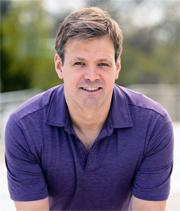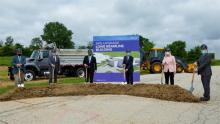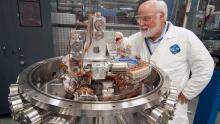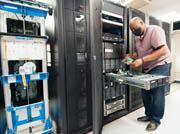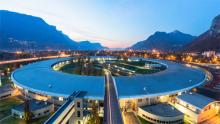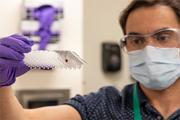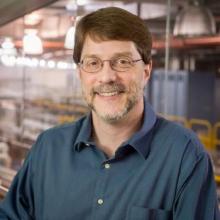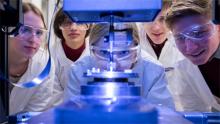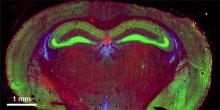2020
Argonne National Laboratory researchers, including seven Advanced Photon Source scientists, are recipients of U.S. Department of Energy funding awards for research and development in artificial intelligence and machine learning methods to handle data and operations at DOE scientific user facilities.

Two members of the Advanced Photon Source/Photon Sciences Directorate, and the daughter of another Photon Sciences staffer, were among the more than 70 Argonne National Laboratory community members who were honored at a virtual awards ceremony hosted by the UChicago Argonne Board of Governors on Wednesday, September 16, 2020.
Exoplanets, or planets outside of our solar system, that contain more carbon than Earth could be made out of diamonds, according to a new study based on research at the U.S. Department of Energy's Advanced Photon Source at Argonne National Laboratory.
Thomas Anthony Padilla, Tom to his countless friends and colleagues, passed away on August 27, 2020.
We note the passing of Andre McKenzie on July 11, 2020. Andre was a valuable and valued member of the Argonne National Laboratory and Advanced Photon Source families for many years.

The White House Office of Science and Technology Policy, the National Science Foundation (NSF), and the U.S. Department of Energy (DOE) announced over $1 billion in awards for the establishment of 12 new artificial intelligence (AI) and quantum information science (QIS) research institutes nationwide.
The $1 billion will go towards NSF-led AI Research Institutes and DOE QIS Research Centers over five years, establishing 12 multi-disciplinary and multi-institutional national hubs for research and workforce development in these critical emerging technologies. Together, the institutes will spur cutting edge innovation, support regional economic growth, and advance American leadership in these critical industries of the future. Led by the U.S. Department of Energy’s (DOE) Argonne National Laboratory, Q-NEXT is one of the five Quantum Information Science Research Centers to be established by DOE.
Yu-Sheng Chen, a research professor at the University of Chicago and Operations Manager for the ChemMatCARS Sector 15 x-ray beamllnes at the U.S. Department of Energy’s Advanced Photon Source (APS) has been named the recipient of the 2020 DECTRIS Award sponsored by the DECTRIS detector manufacturer for studies of metal-organic frameworks carried out at ChemMatCARS. The awarded work was published in the journal Nature Chemistry and highlighted on the APS web site.
APS Director Stephen Streiffer and the Photon Sciences Directorate Diversity and Inclusion Council strongly encouraged staff and beamline personnel to take advantage of the latest Argonne initiative on diversity, equity, and inclusion. In the workshop, “Equity-mindedness: Identifying and Interrupting Implicit Bias through Candid Conversations,” participants learn more about their own socialization and social identities along with the conscious and unconscious prejudices and bias they may hold. Furthermore, they learn to identify and challenge unexamined beliefs about self and others and understand how these beliefs have contributed to inequity.
Ming Du and Chris Jacobsen have been awarded 250,000 node hours on the Argonne Leadership Computing Facility’s Theta computer by the U.S. Department of Energy’s (DOE’s) Advanced Scientific Computing Research program Leadership Computing Challenge. The computer time will be used for “Distributed large wavefield propagation and 3D reconstruction beyond the depth of focus limit.” Du is an Advanced Photon Source postodoctoral appointee; Jacobsen is an Argonne National Laboratory Distinguished Fellow and Special Advisor to the APS Director for Imaging and Instrumentation, and a professor in the Department of Physics and Astronomy at Northwestern University.
Recently, the Advanced Photon Source (APS) User Program Office received a question from a student asking why the APS had not yet found a COVID-19 vaccine. Bob Fischetti, Life Science Advisor to the APS Director and Group Leader of GM/CA-XSD, drafted a detailed reply that the User Office staff thought was so informative, they suggested we share it with all of you.
Northwestern University organic chemist William Dichtel has been named the National Laureate in Chemistry by the 2020 Blavatnik National Awards for Young Scientists. Dichtel is a user of the research capabilities afforded by the high-brightness x-rays produced at the U.S. Department of Energy’s Advanced Photon Source.
In a socially distanced ceremony held on the morning of July 22, 2020, at the U.S. Department of Energy’s Argonne National Laboratory, leaders from DOE, Argonne, and the University of Chicago broke ground on the future of x-ray science in the United States.
From chemistry to materials science to COVID-19 research, the Advanced Photon Source is one of the most productive x-ray light sources in the world. An upgrade will make it a global leader among the next generation of light sources, opening new frontiers in science.
When Argonne National Laboratory entered minimum safe operations status in order to minimize on-site personnel in response to the COVID-19 pandemic, a rotating number of Advanced Photon Source technical staff were among those who came on site to keep the APS operational in support of the critical novel coronavirus-related research ongoing at the beamlines. Here are a few of those people who kept the light on at the APS.
A brilliant new light shines in Grenoble, France, where officials at the European Synchrotron Radiation Facility last week announced the reopening of their completely rebuilt x-ray source. ESRF will have a few years to press its advantage. Its nearest competitor, the Advanced Photon Source (APS) at Argonne National Laboratory in Illinois, will undergo a similar yearlong rebuild in 2022, says APS Director Stephen Streiffer. “We see the two machines not so much as competitors but as sister facilities,” Streiffer says. “There’s plenty of discoveries to go around.”
Facing a global pandemic, the Department of Energy’s national laboratories are mobilizing on a national scale in ways similar to their origins in the Manhattan Project and launching the National Virtual Biotechnology Laboratory.
After a national search, Stephen Streiffer has been named Argonne National Laboratory Deputy Director for Science and Technology, effective July 1, 2020. Streiffer is currently Director of the Advanced Photon Source and Argonne Associate Laboratory Director for the Photon Sciences Directorate, which encompasses the APS and the APS Upgrade Project.
The Exemplary Student Research Program at the U.S. Department of Energy’s Argonne National Laboratory, now in its ninth year, welcomed 137 students and 23 teachers from 17 diverse Chicagoland high schools for the 2019–2020 school year. It is one of the few elite programs in the world to provide high school students with the opportunity to conduct research using advanced light sources and microscopy.
The Industrial Macromolecular Crystallography Association (IMCA), which operates the IMCA-CAT facility at the U.S. Department of Energy’s Advanced Photon Source , announced that Janssen Research & Development, LLC, has joined IMCA, an association of pharmaceutical companies that leverages the power of high-energy X- rays to accelerate structural biology research for drug discovery.
The Chemistry of Life Processes Institute at Northwestern University, the Advanced Photon Source at Argonne National Laboratory, and several leading research universities will join forces to launch a first-ever national hub for interdisciplinary, metallomics research and innovation, the Resource for Quantitative Elemental Mapping for the Life Sciences (QE-Map).



